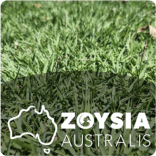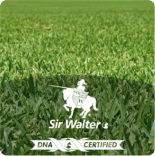Maintaining a lush, weed-free garden or lawn requires consistent effort and effective weed control strategies. While various methods can be employed, using herbicides to poison weeds is a common practice. However, the timing of herbicide application is crucial for optimal results. Moreover, understanding the effects of pre- or post-mowing on herbicide efficacy is equally important. In this blog, we will explore the best time to poison weeds and the consequences of applying herbicides before or after mowing.
The Best Time to Poison Weeds:
Timing plays a vital role in successfully eliminating weeds with herbicides. Ideally, it is best to apply herbicides when the weeds are actively growing and in their vulnerable stage. Typically, the ideal time to poison weeds is during their early growth stage, before they have the chance to mature and spread their seeds. This stage may vary depending on the specific weed species, but generally, targeting weeds when they are small and actively growing will yield the best results.
Pre-Mowing and Herbicide Application:
Some individuals may consider mowing the lawn or garden before applying herbicides, assuming that shorter weeds will be easier to target. However, pre-mowing before herbicide application can have unintended consequences. When you mow before applying herbicides, you reduce the target area for the herbicide to adhere to, making it less effective. Additionally, mowing can stimulate weed growth and promote seed dispersal, leading to further weed infestations. Therefore, it is advisable to avoid pre-mowing if you plan to poison weeds with herbicides.
Post-Mowing and Herbicide Application:
After mowing, you may be tempted to apply herbicides immediately, believing that the freshly cut weed foliage will absorb the chemicals more efficiently. However, this approach can also have negative consequences. When you mow before applying herbicides, the weeds are stressed and may redirect their resources towards regrowth instead of absorbing the herbicide effectively. The stressed weeds may also have a compromised ability to transport the herbicide throughout their system, reducing its efficacy. Therefore, post-mowing herbicide application is generally not recommended.
Optimal Application Techniques: To maximize the effectiveness of herbicides, follow these guidelines:
- Choose the appropriate herbicide for the target weed species.
- Read and follow the manufacturer's instructions carefully.
- Apply herbicides during calm weather conditions to prevent drift.
- Ensure the weeds are actively growing, avoiding extreme heat or drought conditions.
- Apply the herbicide directly to the weed foliage, covering the leaves evenly.
- Avoid watering or rainfall for at least 24 hours after application to allow absorption.
Timing is a critical factor when it comes to poisoning weeds effectively. Applying herbicides when the weeds are actively growing and in their early growth stage will yield the best results. While it may seem intuitive to mow before or after herbicide application, doing so can diminish the herbicide's effectiveness and promote further weed growth. Therefore, it is advisable to avoid pre- or post-mowing when planning to use herbicides. By adhering to proper timing and application techniques, you can effectively control and eliminate weeds, ensuring a healthy and vibrant garden or lawn.













